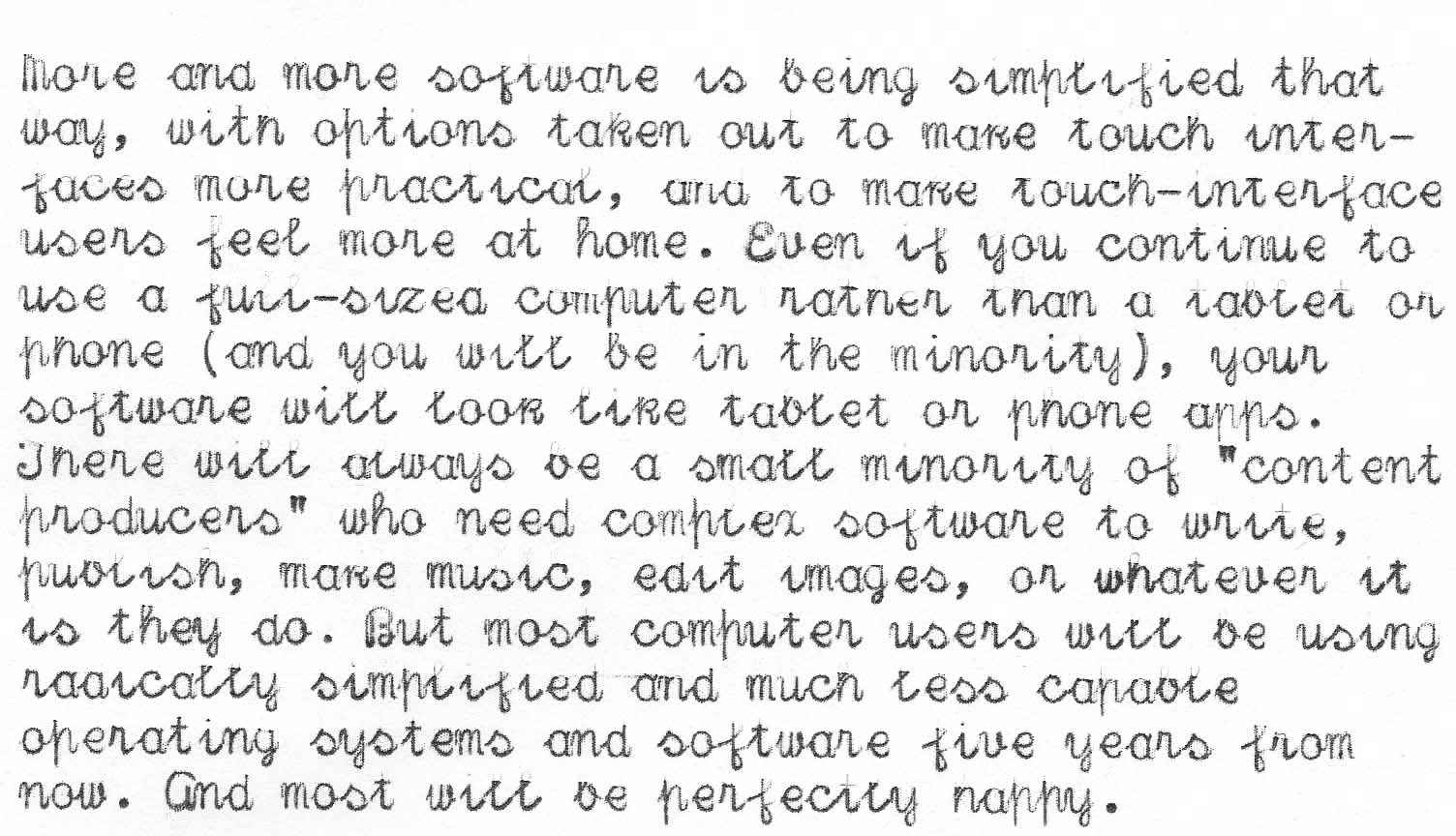Typewriter: Smith-Corona Sterling.
So we conclude our series of predictions for International Typewriter Appreciation Month. This article is printed in quotable and searchable form below.
The computer you use five years from now will probably be much less capable than the one you’re using now.
Why does Dr. Boli make that prediction?
Because the trend in that direction is already obvious, and has been so for several years.
Now, Dr. Boli does not mean that technology itself will stop advancing. Five years from now, the computer you use daily will probably be very slick and fast and look like shiny hard candy.
But unless you are in a profession where it is necessary to generate many kinds of content, your computer will probably be deliberately crippled.
This is not cruelty on the part of the computer makers: they are simply responding when the market tells them what it wants.
Do you remember what a swell idea multitasking was back in 1990 or so? If you’re using a laptop or desktop computer, you can find some music you like on YouTube, set it going, and then switch over to your word processor to work while the music keeps playing.
If you try that on an Android tablet, the music will stop. Android devices do not multitask. (Android 5 will have a limited kind of multitasking called “concurrent activities,” but it will not be as straightforward or capable as the multitasking in your desktop operating system,)
This was a conscious design decision. It is not a question of the power of the device; the smartphones and tablets of today are far more powerful than the computers that ran Windows 95. Small screens and fat fingers work poorly together unless the touch interface is simplistic in the extreme. The iOS and Android interfaces are elegant and easy, but they are deliberately limited to what they can do well.
Speaking of word processing, have you tried doing it on an Android device? Even the most capable Android document programs give you a tiny subset of the capabilities of desktop word processing. It’s another conscious design decision. People who use smartphones and tablets are used to simplicity, not complexity; they prefer apps that give them few options and take care of everything for them.
And those people have become the majority, with the result that their preferences are driving the design of desktop interfaces as well. Since the release of the “Unity” interface for Ubuntu, desktop-computer interfaces have been trending toward touch-capable simplicity. Windows 8 (which was suspiciously similar to Unity in some ways) is the most notorious example: running in native mode, Windows 8 strips away all the capabilities that windowed operating systems have built up over the course of a quarter-century, returning us to the tiled Windows of 1985. The GNOME interface in Linux made similar simplifications, throwing out so many capabilities from its file manager that at least two forked projects sprang up to preserve the old code.
More and more software is being simplified that way, with options drastically reduced and capabilities taken out to make touch interfaces more practical, and to make touch-interface users feel more at home. Even if you continue to use a full-sized computer rather than a tablet or phone (and you will be in the minority), your software will look like tablet or phone apps. There will always be a small minority of “content producers” who need complex software to write, publish, make music, edit images, or whatever it is they do. But most computer users will be using radically simplified and much less capable operating systems and software five years from now. And most will be perfectly happy.


